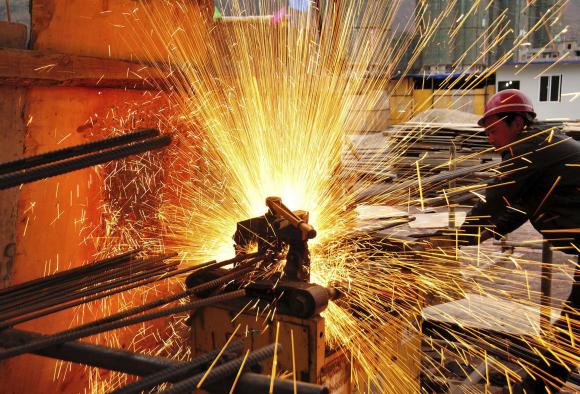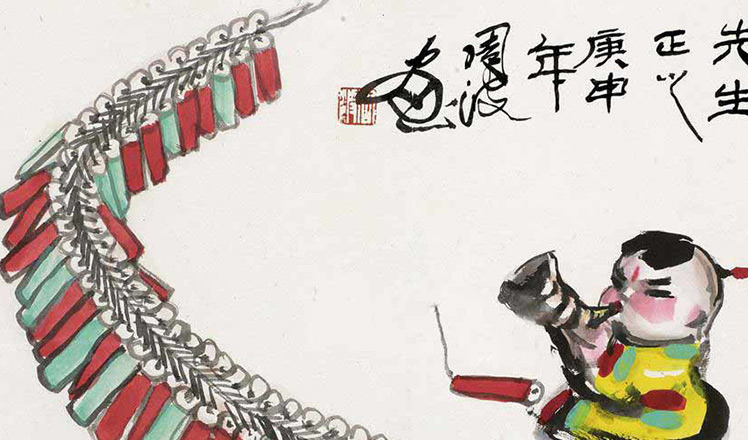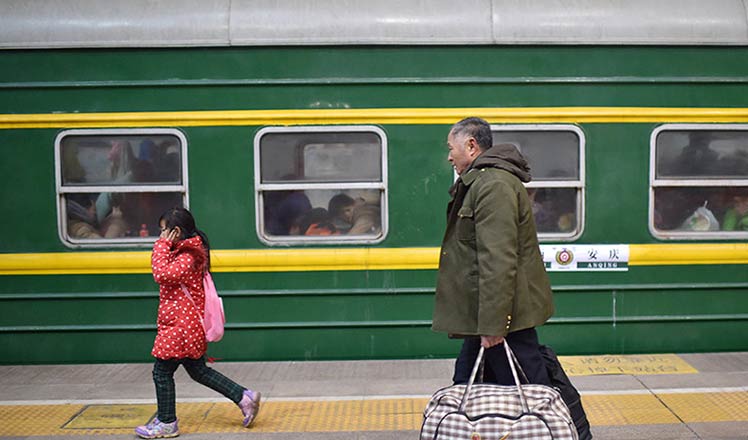China on the way to more quality growth
Updated: 2016-01-22 13:45
By Wu Jiangang(chinadaily.com.cn)
|
||||||||
 |
|
A worker welds at a construction site in Yiliang, Yunnan province, February 28, 2015.[Photo/Agencies] |
China is undergoing economic transformation from an unsustainable mode supported by government investment and export to a sustainable one mainly backed by innovation and domestic demand.
The faster the transition process, the more destruction it will bring to the old sectors representing the old growth model and provide more space to the new sectors representing the new growth model. For some Chinese, it is the winter of despairs; for many others, it is the spring of hopes.
Economists had been calling for and discussing transition for many years but not much happened. Although exports fell after the subprime crisis, government investments rose to smooth the impact of the decline in global demand. The transition finally began in 2015.
According to official statistics released on Tuesday, China's GDP growth rate was 6.9 percent in 2015. Though the figure is much higher compared with mature economies, it is the slowest since 1990.
With such a slow growth, which may just be the start of a continual slowdown, people may worry about China's many problems that were expected to be solved in longer term during fast economic growth, such as overcapacity, possible burst of real estate bubble, possible massive default of local government debt and possible capital flight.
But with the pressure of possible crises, the transition can happen faster. In 2015, the tertiary industry contribution to GDP was 57.70 percent, 7.1 percent higher than 2014's and the consumer spending contribution to GDP was 66.4 percent, astonishingly 15.2 percent higher than 2014's.
The service sector is increasingly becoming the main driver of growth. Moreover, from the third quarter, besides the financial department, a broad category called "other services" -- which include healthcare, education, law, and accounting among others -- unexpectedly became a strong boost of the economic growth.
Since the problems of the old growth mode can occur in a short time and on a big scale, the advantages of a new growth mode only comes slowly, it is a necessary price for the transition that GDP growth rate will gradually slow down.
For 2015, with such an improvement in its economic growth structure, a 6.9 growth rate along with a stable price index and a stable employment rate are well acceptable. In the future, it will be difficult to post double-digit growth in GDP.
There are two reasons for that: on the one hand, the demographic dividend is exhausting, the land resources are becoming expensive and the tolerance to environmental pollution is becoming lower; on the other hand, the contributions of institutional reform and people's innovation increase slowly.
China is also facing middle-income trap. The trap can become true when there is a corrupt government and big difference between rich and poor. But China is different from most other developing countries in both the social system and their people.
China's society is huge and uniform, which can support a big market and nurture great innovations and huge companies. China is lucky to have a strong government to lead the country through the transition, especially when the government's policy is now on the right track - the government on the one hand takes great efforts to combat corruption and on the other hand promote supply-side reform. Chinese, who put more importance on their family, can tolerate a bigger difference between rich and poor, too.
However, China may still maintain a reasonable fast growth in the future years for three reasons. First, China's GDP per capita is still low, which was about $8,000 in 2015. Second, with most people educated, good infrastructure, increasing application of science and technology and an efficient strong government, China is accelerating the transition towards a modern society. Third, Chinese are hard-working people who are eagerly fighting for their better future.
The 2015's data may mean that China is doing a good job in solving its most important problem for China's economic transition -- to remove excess capacity while keeping employment stable.
The government's supply-side reform captures the core of China's economic problems. To remove excess capacity is the first step. In the long run, China needs to find a way to makes enterprise provide products according to the demand of markets. By such a way, enterprises can earn profits, people can find jobs and investors can secure their assets.
While China's old model is driven by government investment and export, the supply-side reform is, as the heart of the new growth mode, a free-market reform.
The essence of well-functioning free market is that enterprises can freely choose their products, prices and customers and compete with each other equally, which means that government needs to withdraw from production activities and focus on providing services such as protecting property rights and curbing illegalcompetitive activities.
It seems that there is still a long way to go for China. China's future is neither much optimistic in the short run nor much pessimistic in the long run. After some rough weather, a bright future will gradually emerge.
The author is a lecturer at the Management School of the Shanghai University and a research fellow at the China Europe International Business School Lujiazui International Finance Research Center. The views do not necessarily reflect those of China Daily.
- Consumption contributes more to China's economic growth
- China has plenty of opportunities for economic growth in 2016: expert
- Industrial output to drag economic growth in China in 2016
- China's Belt and Road Initiative to give new impetus to world economic growth
- Two-child policy to increase potential economic growth rate
- A glimpse of Spring Rush: little migrant birds on the way home
- Policy puts focus on genuine artistic students
- Police unravel market where babies are bought, sold as commodities
- More older pregnant women expected
- Netizen backlash 'ugly' Spring Festival Gala mascot
- China builds Mongolian language corpus
- 2 Chinese nationals killed, 1 injured in suspected bomb attack in Laos
- New York, Washington clean up after fatal blizzard
- 'Plane wreckage' found in Thailand fuels talk of missing Malaysian jet
- Washington shuts down govt, NY rebounds after blizzard
- 7 policemen, 3 civilians killed in Egypt's Giza blast
- Former US Marine held in Iran arrives home after swap

 Drone makers see soaring growth but dark clouds circle industry
Drone makers see soaring growth but dark clouds circle industry China's Zhang reaches Australian Open quarterfinals
China's Zhang reaches Australian Open quarterfinals
 Spring Festival in the eyes of Chinese painters
Spring Festival in the eyes of Chinese painters
 Cold snap brings joy and beauty to south China
Cold snap brings joy and beauty to south China
 The making of China Daily's Tibetan-style English font
The making of China Daily's Tibetan-style English font
 First trains of Spring Festival travel depart around China
First trains of Spring Festival travel depart around China
 Dough figurines of Monkey King welcome the New Year
Dough figurines of Monkey King welcome the New Year
 Ning Zetao, Liu Hong named China's athletes of the year
Ning Zetao, Liu Hong named China's athletes of the year
Most Viewed
Editor's Picks

|

|

|

|

|

|
Today's Top News
National Art Museum showing 400 puppets in new exhibition
Finest Chinese porcelains expected to fetch over $28 million
Monkey portraits by Chinese ink painting masters
Beijing's movie fans in for new experience
Obama to deliver final State of the Union speech
Shooting rampage at US social services agency leaves 14 dead
Chinese bargain hunters are changing the retail game
Chinese president arrives in Turkey for G20 summit
US Weekly

|

|







